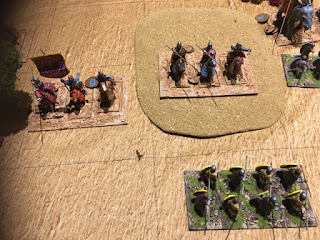I briefly visited Port Royal and took a few pictures. The following text is taken from the "Jamaica National Heritage Trust" boards around Fort Charles, which was unfortunately closed.

The Sunken City
By the year 1692, the year of the terrible earthquake, the city of Port Royal was heavily built up and crowded onto 51 acres at the tip of a sand spit. At this point Port Royal’s estimated population was estimated to be at 6,500 with 4,000 whites and 2,500 enslaved Africans, all living in approximately 2,000 houses. Many of the houses were quite luxurious; many were constructed of brick and reached up to four stories tall. Most of the large warehouses and the finest homes were located along the harbour. Many shops and humble dwellings had been constructed among these larger houses. There were a large number of taverns and shops, numerous public buildings, an Anglican Church, a Jewish Synagogue, and a Quaker meeting room. In addition several forts and batteries were built around the perimeter of the town.
On the morning of June 7, 1692, a series of three devastating tremors, each worse than the one before, destroyed the town and plunged 33 acres of land - along with many homes and people into the sea, leaving only an 18 acre area above water as a small island cut off from the rest of the spit. All the wharves fell into 40 or 50 feet of water and were followed by the houses on the streets as far back as Jew Street. A terrible wave of water followed the quake. to fill the vacuum left by the land. Fort Charles was damaged, while Fort James, Fort Rupert and Fort Carlisle all disappeared beneath the sea. Some 4,000 people eventually died from the quake, the subsequent tsunami and the chaos that followed.
Morgan's Line
Morgan’s Line, also referred to as Morgan’s Wall, was originally called Morgan's Fort. It was named after the famous privateer-governor Sir Henry Morgan. Morgan was one of the most famous buccaneers of Port Royal. Originally from Wales, Morgan came to Jamaica with the forces of Penn and Venables in the English invasion of 1655. He stayed on and became a privateer in Port Royal. His days as a privateer were immensely successful. His raid on Portobello in 1668 yielded a total plunder of 250,000 pieces-of-eight. This is equal to £155 million today or US$240 million. The impact of this fabulous wealth on a tiny sandbar settlement can only be imagined and he enabled Port Royal to be sustainable in this period.
Later he became an agent of the Crown and served as Lieutenant Governor of Jamaica in 1678 and 1680 -1682. He ended his life as a wealthy planter with three estates, a large number of enslaved African workers and a thriving business In sugar and rum production. Morgan was a great enthusiast for defensive works and oversaw the construction of many of Port Royals’ defences. Originally located between Forts Charles and Rupert, the construction of Fort Morgan was completed in September 1697 and eventually held 16 guns. Today fragments of this wall made of large square cut limestone blocks can still be seen as it runs from the square and on to the Prince of Wales Line.
Fort Charles
Fort Charles formerly known as Fort Cromwell was the first fort to be erected in Port Royal. Its construction started soon after the invasion of Jamaica in 1655. This fort is still considered to be the oldest surviving monument of the British occupation of Jamaica. In 1662 Fort Cromwell was renamed Fort Charles in honour of the restored King of England, Charles II, who came to the throne in 1660. Originally, Fort Charles was almost entirely surrounded by water and was constructed somewhat like an 18th-century floating castle with a simple tower. It was intended to protect the entry to the harbour.
Between the years 1656 - 1770 the fort underwent several construction phases. In 1662, 40 men were hired to complete the platform around the tower at Fort Charles. By 1667, the fort had 36 guns and by 1765 Fort Charles had achieved its full capacity and it had 104 guns and a garrison of 500 men. By 1724 the fort had been enlarged to the North and joined on to the sea wall of the town. Of the two buildings in the courtyard, the larger one dates from before 1699, and the smaller one before 1724. These restored structures were once occupied by Admiral Horatio Nelson, who passed his examinations as a lieutenant in April 1777.
The 18 year old Nelson left for Jamaica in May of that year. Other outstanding naval men associated with the history of the fort include Admirals Benbow, Vernon, Rodney and Parker.
Fort Charles' impressive guns were very rarely fired in anger, in fact they were used mainly to salute ships coming In. A different number of shots was used depending on the rank of officer on the ship. One exception was firing at the pirate Captain Joseph Bannister and his ship The Golden Fleece in 1684. Bannister was arrested for piracy, but at night he slipped out of Port Royal under the guns of Fort Charles. The commander of the fort at that time, Major Peter Beckford, saw him too late and Bannister passed 14 of Fort Charles’ 17 guns before being spotted, so just three guns hit him and he was able to escape.
The fort was partially destroyed in the 1692 earthquake and sank 31/4 ft into the ground. It was rebuilt in much the same form as it exists today. The metal rings which are still secured in the front wall were actually used for mooring ships which sailed into Chocolata Hole (now the parking lot). The wooden walkway known as Nelson's Quarter deck was destroyed by the 1951 hurricane. It was rebuilt by 1953 with timber brought from Belize.






















































